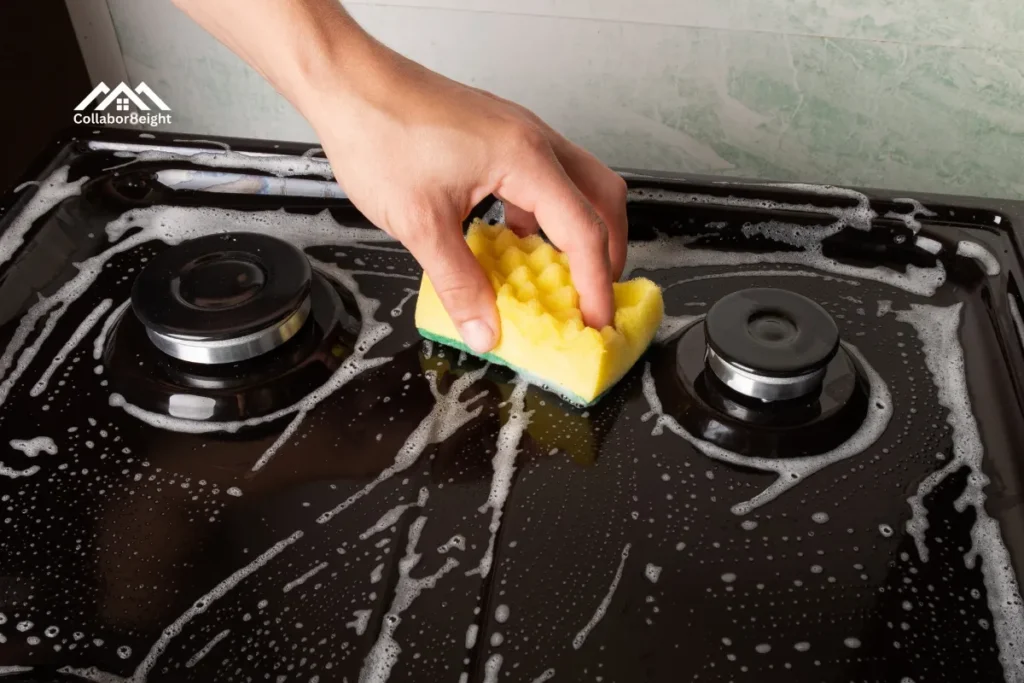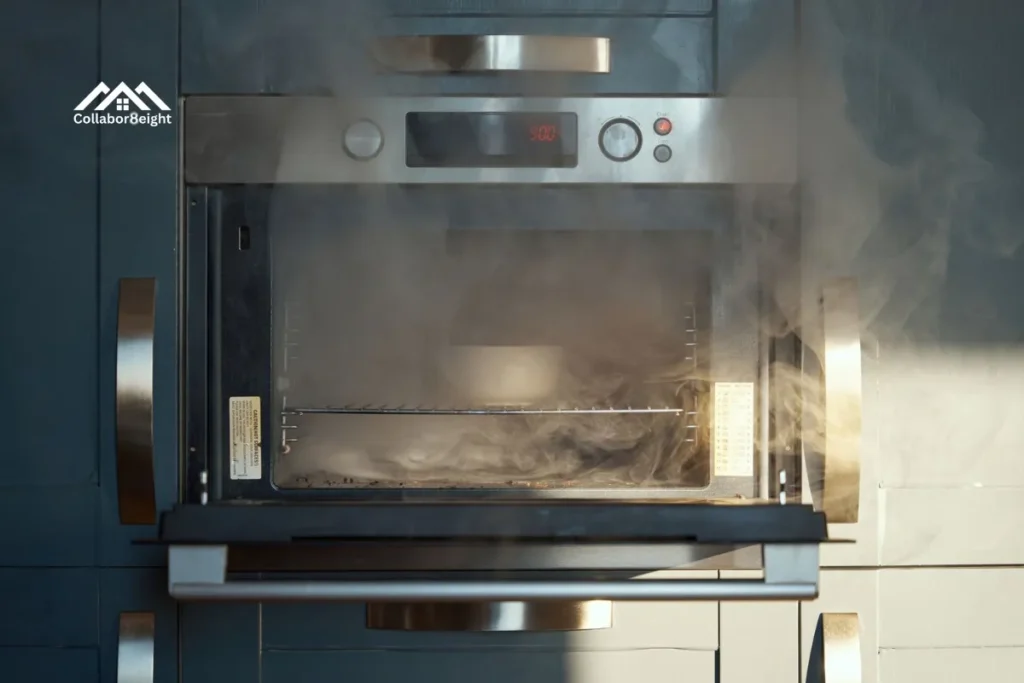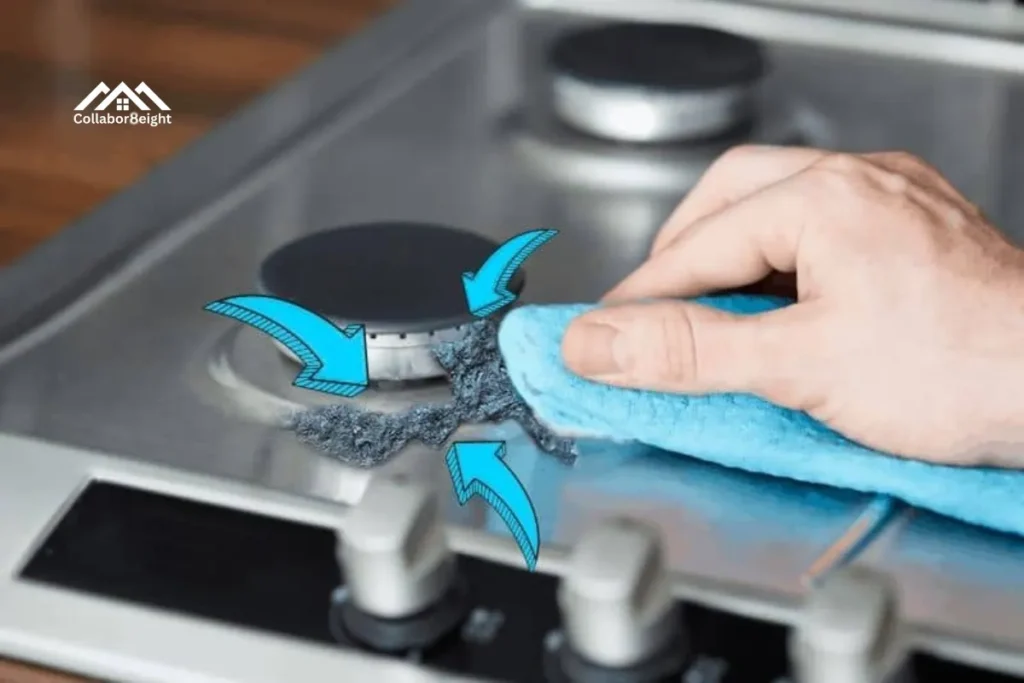Understanding Burners & Why Plastic Sticks
Before we jump into cleaning, it helps to understand why plastic melts & sticks to burners in the first place. Different types of burners react differently to heat, and knowing this can save you from making mistakes that could damage your stove or make cleanup harder.
Electric Coil Burners
Electric coils heat up quickly, which makes them perfect for cooking, but also makes them risky for plastic mishaps. Once plastic touches the hot coil, it softens immediately & can stick stubbornly. The trick is to wait for the coil to cool slightly, then carefully scrape away the plastic using a wooden or plastic tool.
Gas Burners
Gas burners have grates & open flames. Plastic can drip onto the burner caps or fall between grates. This type of spill is tricky because flames can burn the plastic quickly, creating smoke & a strong odor. The best approach is to remove the grates, soak them if necessary, & clean off the residue gently.
Glass & Ceramic Stovetops
Glass & ceramic tops are sleek & modern, but they’re sensitive. Plastic will stick to the surface & can leave scratches if you use the wrong tool. Use a plastic scraper or a razor held at a 45-degree angle, combined with a gentle cleaner, to remove residue without damaging your stovetop.
Why Plastic Clings
- Plastic melts & bonds with hot surfaces because of its low melting point.
- Residue left on the burner can become tougher to remove the longer it stays.
- Some plastics release fumes if left on heat too long, so immediate action is essential.
By understanding how each type of burner reacts & why plastic clings, you’ll be prepared to choose the safest & most effective method to remove it. This knowledge makes the cleanup process faster, safer, & less stressful.
Immediate Actions After Plastic Spills
So, you’ve just spotted that dreaded blob of melted plastic on your burner. Don’t panic! Acting fast & safely is the key to solving this problem without making it worse. Let’s go through the steps you should take immediately.
1. Turn Off the Burner & Cool the Area
First things first—turn off the burner. If it’s electric, unplug it if possible. For gas burners, make sure the flame is completely out. You don’t want any heat causing more plastic to melt or releasing extra fumes.
Next, let the surface cool slightly. You don’t want to touch it while it’s scorching hot, but leaving it for too long can make the plastic harder to remove. A few minutes is usually enough to make it safer to handle.
2. Ventilate Your Kitchen
Melted plastic can release strong fumes that are unpleasant & potentially harmful if inhaled for too long. Open windows, turn on fans, or use your kitchen hood to keep the air moving. This simple step will make your cleanup process much safer & more comfortable.
3. Gather Your Tools
Before touching the plastic, get your cleaning supplies ready. You’ll need items like:
- A wooden or plastic spatula
- Baking soda & vinegar for a natural paste
- A scraper (for glass or ceramic stovetops)
- Optional commercial cleaners like Goo Gone or WD-40
Having everything within reach means you won’t have to rush, reducing the chance of mistakes or accidents.
4. Protect Yourself
Wear gloves if you have them. Plastic can be sticky & hot, and some cleaners may irritate your skin. Protecting yourself ensures a safe & stress-free cleanup.
By following these immediate steps, you’re setting yourself up for success. You’re not just randomly scraping at the plastic, you’re preparing the burner & your workspace so that when you move to the actual cleaning, it’s fast, safe, & effective.
Remember, knowing how to get plastic off a burner starts with proper preparation. Skipping these steps can lead to stubborn residue, scratches, or even burns. Take your time, be safe, & you’ll have your stovetop looking clean again in no time.
Choosing the Right Cleaning Method for Your Burner Type
Not all burners are created equal, and the method you use to clean melted plastic can make a huge difference. Picking the right approach ensures you remove the plastic safely & efficiently without causing damage. Let’s break it down by burner type.

Electric Coil Burners
Electric coils are tough but tricky. Here’s how to tackle melted plastic:
- Make sure the coil is completely cool before touching it.
- Use a wooden or plastic spatula to gently lift off softened plastic. Avoid metal tools—they can scratch or damage the coil.
- For stubborn spots, apply a baking soda paste (mix baking soda & a little water) and let it sit for 5–10 minutes before scrubbing gently.
- Wipe with a damp cloth to finish.
Gas Burners
Gas burners have grates & small crevices where plastic can hide. Follow these steps:
- Remove the grates & burner caps carefully.
- Soak removable parts in warm, soapy water for 10–15 minutes.
- Scrape off melted plastic with a wooden or plastic tool.
- For extra stubborn residue, use vinegar or a plant-based cleaner to dissolve leftover bits.
- Rinse & dry everything before putting it back.
Glass & Ceramic Stovetops
These surfaces are sleek but delicate:
- Let the stovetop cool completely.
- Use a plastic scraper or a razor blade held at a 45-degree angle to lift off the plastic gently.
- Apply a baking soda paste or a gentle stovetop cleaner to dissolve residue.
- Wipe clean with a soft cloth to avoid scratches.
Pro Tips for All Burners
- Never scrape while hot—it can spread the plastic or damage the surface.
- Test any cleaner on a small, hidden area first.
- Patience is key. Rushing can lead to scratches or leftover residue.
By understanding your burner type & following these steps, you’ll know exactly how to get plastic off a burner without stress or damage. Choosing the right method makes the cleanup faster, safer, & more effective.
DIY Home Remedies
Sometimes the best solutions are right in your kitchen. DIY home remedies are safe, affordable, & surprisingly effective when it comes to removing melted plastic. Let’s explore some simple tricks that make cleaning your burner much easier.
1. Baking Soda & Water Paste
Baking soda is a gentle abrasive that helps lift melted plastic without scratching surfaces:
- Mix 2 tablespoons of baking soda with a few drops of water to form a thick paste.
- Apply the paste directly to the plastic residue.
- Let it sit for 5–10 minutes to soften the plastic.
- Use a plastic spatula or scraper to gently lift the residue.
- Wipe clean with a damp cloth.
2. Vinegar Solution
Vinegar works well to dissolve small plastic bits and neutralize odors:
- Mix equal parts vinegar & water in a spray bottle.
- Spray the solution onto the affected area.
- Let it sit for a few minutes, then gently scrape the plastic.
- Wipe dry to finish.
3. Ice or Cold Pack Method
Hardening the plastic makes it easier to remove without smearing:
- Place an ice pack or a bag of ice cubes on the melted plastic for 5–10 minutes.
- The plastic will become brittle & easier to chip away using a wooden or plastic tool.
4. Optional: Mild Commercial Cleaners
If the plastic is stubborn, natural cleaners sometimes need a little help:
- Use products like Goo Gone or WD-40 in small amounts.
- Always test on a small area first & follow the instructions carefully.
- Avoid harsh chemicals on delicate surfaces to prevent scratches or damage.
Why DIY Remedies Work
These remedies combine gentle scrubbing & natural dissolving properties to remove melted plastic safely. Using household items ensures you’re not exposing yourself or your kitchen to toxic chemicals. Plus, they’re budget-friendly & easy to find.
By using these DIY home remedies, you’ll be one step closer to knowing how to get plastic off a burner without stress. These methods are safe, effective, & perfect for quick cleanup when accidents happen.
Using Commercial Cleaners Safely
Sometimes DIY home remedies aren’t enough, especially if the melted plastic is stubborn or has been on the burner for a while. That’s when commercial cleaners can help. The key is knowing how to get plastic off a burner safely without causing damage or exposing yourself to harsh chemicals.
1. Choosing the Right Cleaner
Not all cleaners are safe for every burner:
- Glass & ceramic stovetops: Use mild cleaners like a gentle stovetop cleaner or products labeled safe for glass surfaces.
- Electric coils & metal surfaces: Products like Goo Gone or WD-40 work well.
- Avoid bleach or strong acids—they can damage your stove or leave harmful residue.
2. Safety First
- Always read the label and follow the instructions carefully.
- Wear gloves to protect your skin.
- Ensure your kitchen is well-ventilated. Open windows or turn on fans to avoid inhaling fumes.
3. Step-by-Step Cleaning
- Apply a small amount of cleaner directly to the melted plastic.
- Let it sit for a few minutes to soften the residue.
- Use a plastic scraper or cloth to lift the plastic gently.
- Wipe the area with a damp cloth to remove any leftover cleaner.
- Repeat if necessary, but avoid excessive scrubbing that could scratch the surface.
4. Tips for Best Results
- Test the cleaner on a small hidden area first to ensure it won’t damage your burner.
- Avoid mixing chemical cleaners—stick to one product at a time.
- Don’t use abrasive pads on delicate surfaces; soft cloths or sponges are safer.
Using commercial cleaners safely is a great way to handle tough melted plastic without spending hours scraping or scrubbing. Following these steps ensures your burner stays intact, your kitchen stays safe, and you achieve a clean result quickly.
By combining DIY remedies with the right commercial products, you’ll master exactly how to get plastic off a burner no matter the type of stovetop.
Cleaning Residual Odors & Smoke
Even after removing melted plastic, you might notice a lingering smell or faint smoke stains. These odors can be unpleasant, but don’t worry—they’re easy to tackle if you know the right tricks. This step is essential to fully restore your burner & kitchen to a fresh, clean state.

1. Vinegar & Water Solution
Vinegar is a natural deodorizer:
- Mix equal parts vinegar & water in a spray bottle.
- Lightly spray the cleaned burner & surrounding area.
- Let it sit for 5–10 minutes to neutralize odors.
- Wipe with a damp cloth to remove any residue.
2. Baking Soda for Lingering Smells
Baking soda absorbs odors naturally:
- Sprinkle a thin layer over the affected area.
- Let it sit for 15–20 minutes.
- Wipe away with a damp cloth, leaving your stovetop fresh & clean.
3. Lemon Juice for Extra Freshness
Lemon juice is another natural option that leaves a pleasant scent:
- Squeeze fresh lemon juice over the cleaned area or rub with a lemon half.
- Let it sit for a few minutes, then wipe with a damp cloth.
- This method not only removes odors but also gives your stovetop a light shine.
4. Ventilation
Even after cleaning, ensure your kitchen is well-ventilated. Turn on fans or open windows to fully remove any residual smoke. This step is especially important if plastic burned slightly, as fumes can linger.
By taking the time to remove residual odors & smoke, you’re completing the cleanup process. This ensures your burner isn’t just free of melted plastic but also safe & pleasant to use. After all, knowing how to get plastic off a burner includes leaving it smelling fresh & looking spotless.
Maintenance & Prevention
Now that your burner is clean and fresh, it’s time to think about keeping it that way. Proper maintenance & preventive measures not only save time but also help you avoid the stress of future plastic spills. By following a few simple habits, you’ll rarely have to wonder how to get plastic off a burner again.
1. Regular Cleaning
- Wipe your burners after every use with a soft cloth or sponge.
- Avoid letting spills sit for long periods; quick action prevents residue from hardening.
- Use mild cleaners for routine maintenance to protect the surface.
2. Use Burner Covers & Mats
- Silicone or heat-resistant burner covers can catch accidental spills.
- They’re easy to remove & clean, saving you hours of scraping and scrubbing.
3. Store Plastic Items Safely
- Keep containers, utensils, & lids away from heat sources.
- Make it a habit to place plastic items on countertops or shelves instead of near burners.
4. Teach Safe Habits
- If you have children helping in the kitchen, explain the dangers of leaving plastic near hot burners.
- Encourage everyone in the household to follow these preventive steps to avoid accidents.
5. Inspect Burners Periodically
- Check coils, grates, and glass tops for residue or damage.
- Promptly address small spills before they become tough, baked-on messes.
By following these simple maintenance & prevention tips, you’ll reduce the chances of ever asking how to get plastic off a burner again. A little care goes a long way, keeping your kitchen safe, clean, & stress-free.
Final Thought
Accidents happen, but now you know exactly how to get plastic off a burner safely & effectively. From immediate actions & DIY remedies to commercial cleaners & preventive tips, you have all the tools to tackle any melted plastic mishap.
Remember, preparation & the right method make cleanup fast, safe, & stress-free. Follow these steps, keep your burners maintained, and you’ll never have to worry about a plastic spill ruining your day again. Your kitchen will stay clean, safe, & ready for cooking adventures!
FAQs
1. Can I heat the burner to remove melted plastic?
No! Heating the burner can make the plastic stick harder and release harmful fumes. Always let it cool slightly before scraping. Safety first!
2. Can I use oven cleaner to remove plastic?
Oven cleaner is very strong and can damage some burners, especially glass or ceramic tops. Stick to baking soda, vinegar, or gentle commercial cleaners.
3. What if the plastic burned onto aluminum grates?
Remove the grates and soak them in warm, soapy water. Use a wooden or plastic scraper to gently lift the residue. Avoid harsh metal scrubbing to prevent scratches.
4. How do I prevent this from happening again?
Use burner covers, store plastic items away from heat, and clean spills immediately. Small habits prevent big headaches.
5. Will fumes from melted plastic cause health problems?
Short exposure isn’t usually dangerous, but fumes can irritate your eyes & lungs. Ventilate the area immediately to stay safe.





